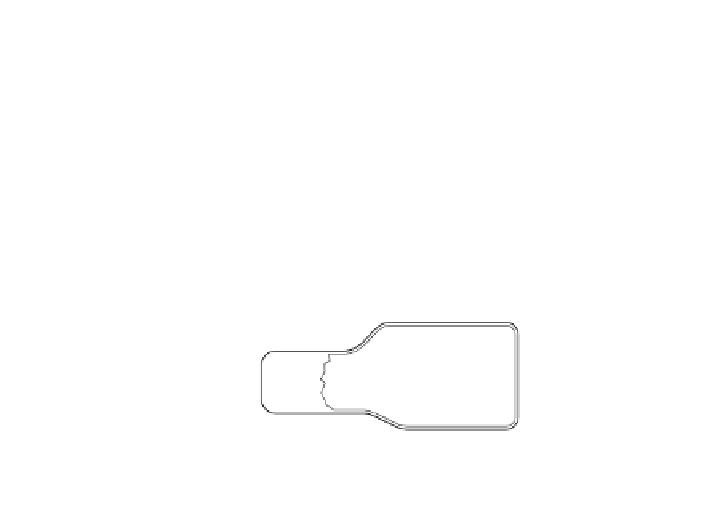Environmental Engineering Reference
In-Depth Information
high pressure pump
with mass control
valve
additional
transfer pump
wingwheel
sensor (1)
00000000
fuel filter
electronic layout and
display
additiv
dosing
unit
fuel pressure
sensor
pressure
regulator
sensor duct
level
indicator (2)
CR tube
pressure control
valve
pressure tube (3)
diving fuel pump
Fig. 4.2
Tank system of a car with a self ignition engine
60 l h
-1
(15.85 gal h
-1
• To
provide
a
flow
capacity
between
(US),
13.20 gal h
-1
(UK)), and 200 l h
-1
(52.84 gal h
-1
(US), 44.03 gal h
-1
(UK))
at nominal voltage; and
• To regulate the pressure of the fuel system between 300 kPa (6,277 lbf ft
-2
) and
450 kPa (9,416 lbf ft
-2
)[
5
].
In addition, electric fuel pumps are increasingly used for modern direct injec-
tion systems, both for spark and self ignition engines at 700 kPa (14,647 lbf ft
-2
).
This high pressure and the very wide viscosity range of diesel fuel mean new
challenges for the hydraulic and the electric systems of fuel pumps.
Several new production designs of fuel tanks are being developed to lower
emissions from the tank. Brush-less pumps and new fuel level sensors are under
development [
6
].
4.1.1 Fuel Measurement
Current requirements for analyzing fuel consumption present a high level of
technology. Driving cycles with artificial conditions create uniform and compa-
rable conditions for the determination of fuel consumption.
The measurement of fuel consumption in the EU is based on the NEDC
according to the requirements of the guideline 80/1268/EEC, Appendix 1, amended




















































Search WWH ::

Custom Search